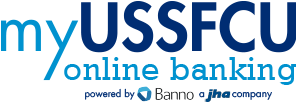Understanding 529 Plans: A Smarter Way to Save for Education
Published: May 23, 2025

529 Day is May 29! Ready to explore smarter ways to save for education? Join our May 28 webinar for a deeper dive into 529 college savings plans.
Register here
As college tuition continues to rise, it’s no surprise that many parents and grandparents are looking for smarter, more efficient ways to plan ahead. According to the College Board, the average cost for a four-year private college—including tuition, room and board, and other expenses—reached $56,390 for the 2024–2025 academic year.¹ That adds up to more than $225,000 for a single student over four years.
With costs this high, many families turn to student loans. In fact, about half of all college graduates in 2023 left school with debt, averaging $29,300 per borrower.² But there’s a way to help reduce or avoid student loans altogether—by saving early with a 529 college savings plan.
What Is a 529 Plan?
Named after Section 529 of the Internal Revenue Code, a 529 plan is a tax-advantaged investment account designed to help families save for education costs. Here's how it works:
- Tax-Free Growth: Earnings in a 529 plan grow tax-deferred and withdrawals are tax-free when used for qualified education expenses like tuition, room and board, books, and fees.
- State Tax Benefits: Many states offer additional incentives, such as tax deductions or credits.
- Estate Planning Perks: Assets in a 529 plan don’t count toward your taxable estate.
- Parental Control: Unlike some custodial accounts, the account owner (usually a parent or grandparent) retains full control over the funds, even after the student turns 18.
And if the original beneficiary doesn’t need the funds—say they earn a scholarship—you can transfer the funds to another eligible family member or even use them yourself for qualified education.
Expanded Uses and New Flexibility
In recent years, the flexibility of 529 plans has grown significantly. Here are a few of the newer features:
- K–12 Tuition: You can use up to $10,000 per year per beneficiary for K–12 tuition at private schools. Note: State tax treatment varies.³
- Student Loans: Up to $10,000 of 529 funds may be used to repay student loan debt.
- Roth IRA Transfers: Beginning in 2024, you can transfer up to $35,000 of unused 529 assets to a Roth IRA for the beneficiary, subject to certain conditions.4
Contribution Limits and Tax Benefits
Contributions to a 529 plan are considered gifts for tax purposes. For 2025, you can contribute up to $19,000 per child (or $38,000 as a couple) without triggering the federal gift tax.4
There's also a special rule that allows for superfunding—you can front-load five years’ worth of contributions, up to $95,000 per child (or $190,000 for couples), with no gift tax consequences, as long as you file IRS Form 709.5
Why Start Now?
The earlier you begin saving, the more time your money has to grow tax-free. Even if your child is already in high school, it’s not too late. Contributions made when your student is 16 can still go toward junior and senior year expenses—or even graduate school.
You can also continue contributing while the student is enrolled, helping to reduce the need for loans in later semesters.
Get Professional Guidance
Choosing the right 529 plan and investment options depends on your financial situation and goals. A Financial Advisor can help you:
- Project future education costs
- Select a 529 plan that aligns with your broader financial strategy
- Determine how much and how often to contribute
- Adjust for changes in tax law or market conditions
Take the First Step Toward Smarter College Savings
A 529 Plan is one of the most flexible and tax-efficient ways to invest in a loved one’s future. Whether you're planning for your child or a grandchild, the best time to start is now.
For a deeper look at 529 plans and how they fit into your broader financial strategy, don’t miss our upcoming webinar:
Unlock the Power of 529 Plans
Wednesday, May 28 | 3:00 PM ET
Join Financial Advisor Michael Schimmel to explore how a 529 plan can help you save smart—with tax benefits and flexibility designed for modern families.
Register Now
Sources:
1. College Board. Trends in College Pricing and Student Aid 2024. https://research.collegeboard.org/media/pdf/Trends-in-College-Pricing-and-Student-Aid-2024-ADA.pdf
2. College Board. Trends in Student Aid: Highlights. https://research.collegeboard.org/trends/student-aid/highlights
3. Saving For College. “Using 529 Savings Plans for Private School Tuition.” https://www.savingforcollege.com/article/529-savings-plans-and-private-school-tuition
4. IRS. “IRS provides tax inflation adjustments for tax year 2025.” https://www.irs.gov/newsroom/irs-releases-tax-inflation-adjustments-for-tax-year-2025
5. IRS. “Form 709 Instructions.” https://www.irs.gov/forms-pubs/about-form-709
This article is for informational purposes only and should not be considered tax, legal, or financial advice. Individual circumstances vary, and you should consult a qualified tax advisor, financial planner, or legal professional to determine what options are best for your specific situation. While we strive to provide accurate and up-to-date information, laws and regulations may change, and we do not guarantee the completeness or accuracy of the content. USSFCU and its representatives do not provide tax or legal advice. Always review your retirement and investment plans with a professional before making any financial decisions.



